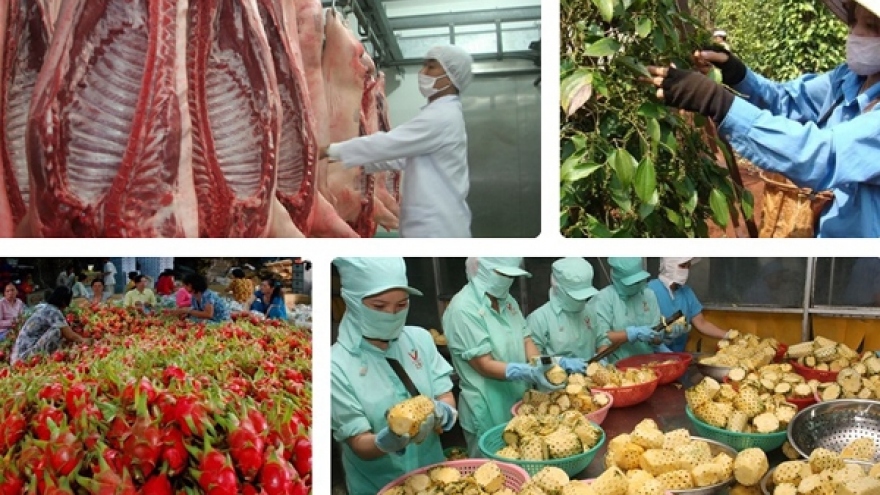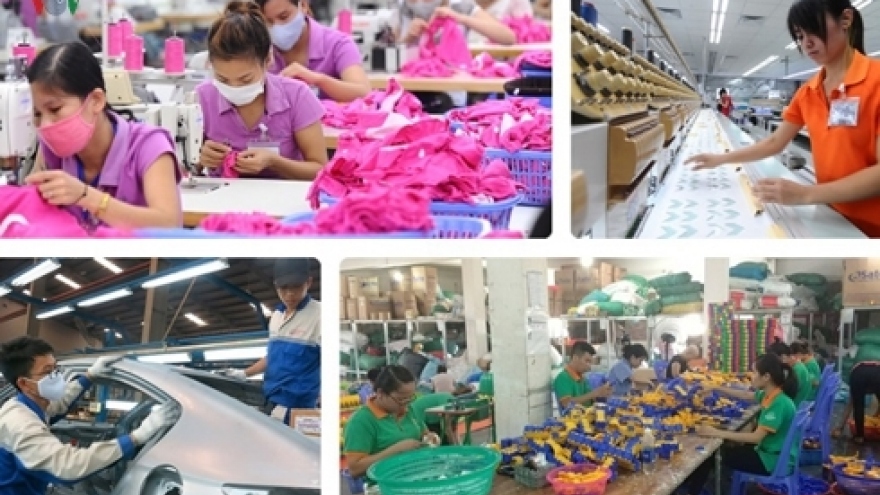FTA opportunities remain largely untapped: trade official
VOV.VN - Only 30 - 40 per cent of local firms have utilized opportunities arising from the free trade agreements Vietnam has signed, though the deals are reckoned to present an array of business chances.
 |
| Vietnam has pledged to lift 66 per cent of tariff lines on commodities imported from CPTPP markets right after the pact came into force from January 14, 2019 onwards. |
Nguyen Thi Quynh Nga, deputy head of the Multilateral Trade Policy Department under the Ministry of Industry and Trade, made the statement during a recent press briefing themed international integration in Hanoi.
The ASEAN Free Trade Area is the first of which the country is a signatory. Vietnam now outshine its regional peers in terms of economic integration, Nga noted, adding that Vietnam and other ASEAN member states had removed up to 98 per cent of tariff lines by 2018.
Regarding the Comprehensive and Progressive Agreement for Trans-Pacific Partnership (CPTPP), Nga emphasized it as the most comprehensive trade pact Vietnam has implemented. Most notably, the Southeast Asian country has pledged to lift nearly 100 per cent of tariffs on imports from other CPTPP members.
In a drastic move, the country has pledged to lift 66 per cent of tariff lines on commodities imported from CPTPP markets right after the pact came into force from January 14, 2019 onwards. Other CPTPP members committed to remove 97 - 100 per cent of tariff lines on Vietnamese goods.
The CPTPP allows for full cumulation, meaning that firms within a CPTPP market can use inputs sourced from other CPTPP markets for their production in order to qualify for preferential tariffs. This origin rule enables local small and medium-sized firms to integrate more deeply within the global supply chain, she added.
The country has made strong commitments to further enhancing the protection of intellectual property and handling issues related to competitiveness and state-owned enterprises. If necessary, the Government is entitled to take measures to protect national security and tackle urgent issues regarding socio-economic development and environmental protection.
The official noted that a fresh commitment by the Vietnamese side is to open up opportunities for providers of public goods from other CPTPP member countries. However, the country is set to put forth limited bidding packages and is entitled to assign domestic providers of public goods during a transition period ranging from 10 - 15 years.
She added that the elimination of tariff lines under CPTPP guidelines would leverage local enterprises to boost their exports to CPTPP markets and make their deeper penetration in the global market as well.
How to tap into the opportunities arising from the CPTPP remains a thorny issue, Nga said, explaining that only 30 - 40 per cent of local firms have so far utilized the chances. She attributed this modest ratio to difficulties facing a large number of local firms in keeping pace with CPTPP requirements as the majority of domestic companies operate on small and medium scale and lack information on CPTPP markets.
Local firms must gain insights into origin regulations set by the importing countries Vietnam has inked FTAs with. They should also seek support from state management agencies to ease quarantine related hindrances for their export, the official added.



